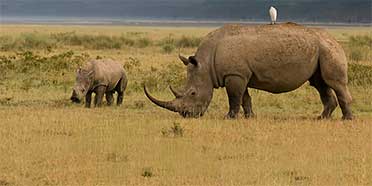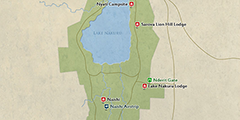
Safari Tours to Lake Nakuru NP
-
![10-Day Kenya 6 Parks Best Wildlife Safari to Diani Beach]()
10-Day Kenya 6 Parks Best Wildlife Safari to Diani Beach
$2,195 pp (USD)
Kenya: Private tourBudgetLodge & Tented Camp
You Visit: Nairobi (Start), Masai Mara NR, Lake Nakuru NP, Hell’s Gate NP, Amboseli NP, Tsavo West NP, Tsavo East NP, Diani Beach, Mombasa (End)

Africa Starpal Safaris
5.0/5 – 150 Reviews
-
![5-Day Nakuru Naivasha Masai Mara Kenya Budget Safari]()
5-Day Nakuru Naivasha Masai Mara Kenya Budget Safari
$640 to $820 pp (USD)
Kenya: Shared tour (max 7 people per vehicle)BudgetTented Camp & Hotel
You Visit: Nairobi (Start), Lake Nakuru NP, Lake Naivasha (Naivasha), Masai Mara NR, Nairobi (End)

Bienvenido Kenya Tours and Safaris
4.7/5 – 123 Reviews
-
![10-Day From Kenya to Tanzania - Mid-Range]()
10-Day From Kenya to Tanzania - Mid-Range
$4,310 to $5,810 pp (USD)
Kenya & Tanzania: Private tour
Mid-range Lodge & Tented CampYou Visit: Nairobi (Start), Lake Nakuru NP, Masai Mara NR, Serengeti NP, Ngorongoro Crater, Lake Manyara NP, Arusha (End)

Soul of Tanzania
5.0/5 – 503 Reviews

 Kenya Parks
Kenya Parks












